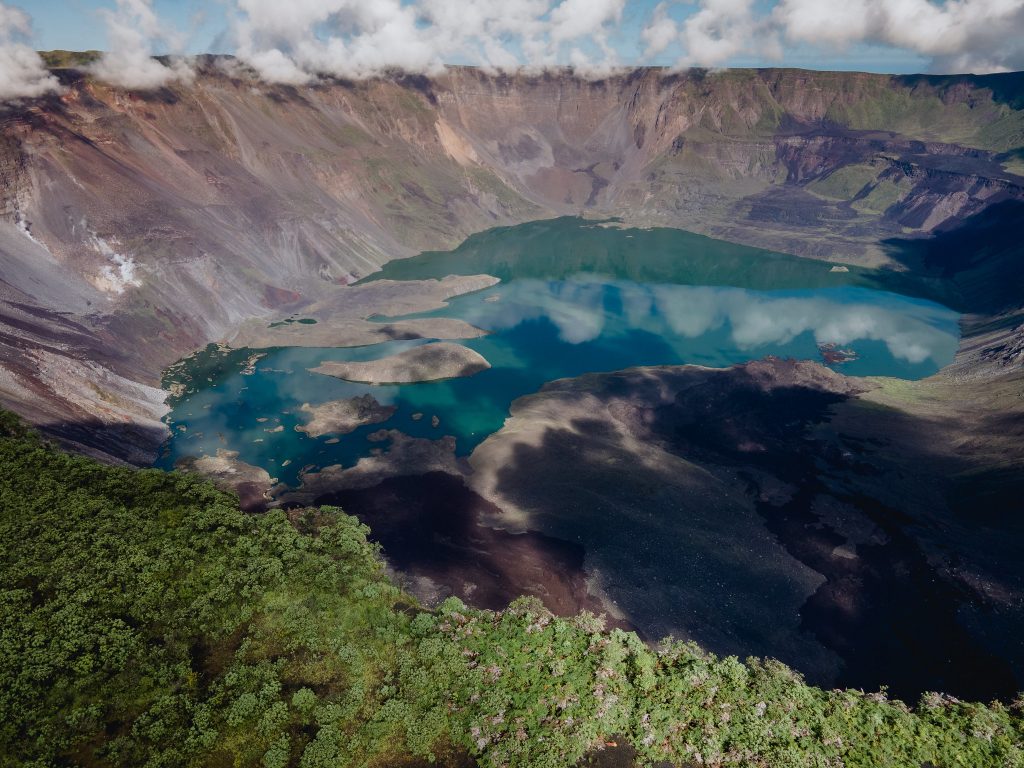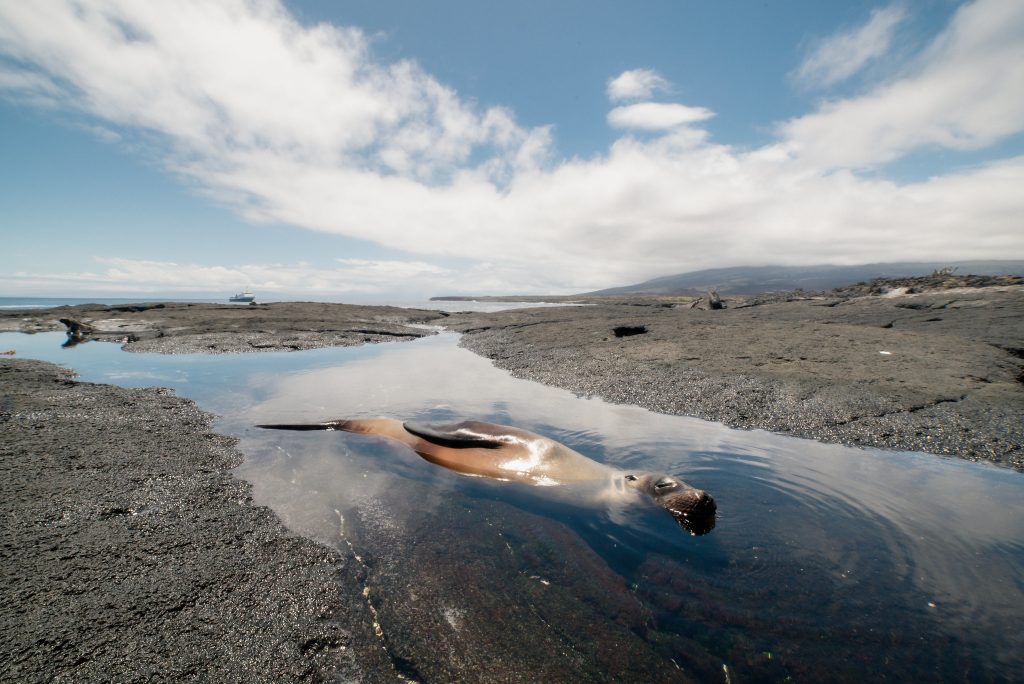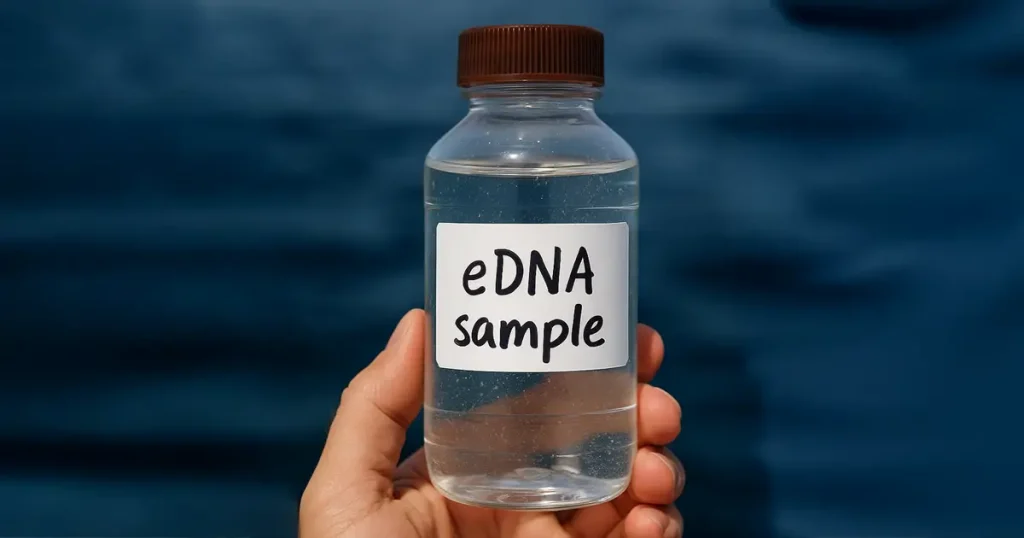Preserving Fernandina Island’s Unique Flora and Fauna: Our Responsibility
Date: 5/5/2023.
//Versión en español abajo.//

To the far west of the Galápagos Archipelago is Fernandina Island, the youngest of the islands and home to an active volcano and incredible, untouched wildlife. With an area of 642 square kilometers, Fernandina is the third largest island, but its remote location and inhospitable conditions have prevented human settlement and protected it from invasive species. Thanks to this protection, Fernandina is a true natural treasure, boasting unique beauty and some of the most fascinating species on the planet.
Despite being one of the world’s most active volcanoes, with its most recent eruption in 2020, Fernandina remains a wildlife paradise. The northern caldera, formed from the volcano’s collapse in 1968, is now a small lake.. The island is home to a wide variety of species, including land and marine iguanas, fur seals, penguins, cormorants, finches, mockingbirds, lava lizards, hawks, Scalesia forests, and mangroves.
While conditions on Fernandina make it unhabitable, the island is an exceptional place to visit and offers a unique opportunity to connect with nature and experience the pristine beauty of the Galápagos Islands. Its unspoiled ecosystems make it an important site for scientists and park rangers to carry out research expeditions and conservation efforts. Conservation of Fernandina is essential for maintaining the island’s rich biodiversity and natural, untouched beauty.
Dr. Jorge Carrión, Director of Conservation at Galápagos Conservancy and its sister organization, Conservando Galápagos, said that conservation of Fernandina would not be possible without the dedication and efforts of the Galápagos National Park rangers, to whom Galápagos Conservancy offers its full support. However, Carrión noted that there is still much to be done, and “there are many future challenges to ensure the long-term protection of Fernandina’s unique nature.”
Fernandina’s unique biodiversity has remained unspoiled for thousands of years, but with growing tourism to the Islands and the threat of invasive species, its conservation is more urgent than ever. We must take action to ensure the long-term protection of Fernandina Island so future generations can enjoy its natural wonder.

Fernandina: Un paraíso de biodiversidad que debe ser protegido
La Isla Fernandina, con un área de 642 km2, un volcán activo con una altitud de 1476 metros sobre el nivel del mar y un cráter de 6,5 km de diámetro, es un verdadero tesoro del Archipiélago. Esta isla joven, la más nueva de las islas Galápagos, ofrece una belleza única y ecosistemas que no se encuentran en ningún otro lugar del mundo, albergando a algunas de las especies más fascinantes del planeta.
A pesar de ser uno de los volcanes más activos del mundo, Fernandina sigue siendo un paraíso para la vida silvestre. La caldera norte, que se formó en el colapso del volcán en 1968, ahora es un pequeño lago. La isla es el hogar de una gran variedad de especies, incluyendo iguanas terrestres y marinas, lobos peleteros, pingüinos, cormoranes, pinzones, pájaros brujo, zayapas, lagartijas de lava, Gavilanes, bosques de Scalesia y manglares.
Aún con condiciones inhóspitas y la actividad volcánica reciente en 2020, Fernandina es un lugar increíblemente especial, donde las labores de ciencia y conservación son esenciales, y brindan una oportunidad única para conectar a guardaparques y científicos con la naturaleza y experimentar la belleza más prístina de las islas Galápagos.
La Isla Fernandina es un reto de conservación, con el que debemos comprometernos para proteger y preservar en su estado más prístino. El Dr. Jorge Carrión, director de conservación de Galápagos Conservancy, y su filial, Conservando Galápagos, asegura que hay mucho por hacer en Fernandina, y que su conservación no sería posible sin la dedicación y el esfuerzo de los guardaparques de la Dirección del Parque Nacional Galápagos, a quienes brindamos todo nuestro apoyo en su misión. “No obstante, se vienen muchos desafíos a futuro para garantizar la protección a largo plazo de la naturaleza única de Fernandina”, señaló Carrión.
La necesidad de seguir luchando por su conservación es más urgente que nunca, y es fundamental que se tomen medidas para garantizar su protección a largo plazo. Solo así podremos asegurarnos de que las generaciones futuras puedan disfrutar de la maravilla natural de la Isla Fernandina.



